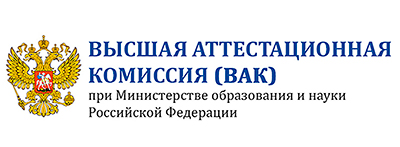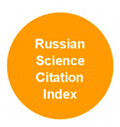Polarization and shrinkage of active space in the core of Russia: trends, problems and possible solutions
Abstract
The polarization and shrinkage of inhabited and economically active areas as a result of their extremely uneven development has become one of the key problems for not only the whole of Russia and its macro-regions, but also for individual regions and groups of them. A study of one group, located in the country's historical core around Moscow, reveals sharp and growing contrasts of the center-periphery type, which are, generally speaking, particularly common in Russia. Factors behind this have been the specifics of crisis-prone urbanization, centripetal migration, and depopulation of inner peripheries, particularly rural ones, under the post-Soviet spatial restructuring of the economy and settlement pattern. These processes are painful for both poles, the central as well as the peripheral, but the latter experiences more acute related problems and feels them more sharply. Their public, expert and official perceptions are different. The paper identifies four possible basic approaches to these problems, along with possible policies and solutions, such as (1) non-interference in the spirit of laissez-faire with the hopes of a natural change (reversal) of the shrinking trend; (2) acceleration of the trend in order to save budget funds by enlarging settlements and social facilities; (3) containment and mitigation of the trend’s negative social consequences by affordable measures; and (4) the search and multi-faceted support for new, reverse waves of development (a kind of reconquest) of the empty periphery, among which the country (dachas) wave stands out as one of the most realistic, massive and, moreover, least costly for the state. Each option has its pluses and minuses, strengths and weaknesses, a quick review of which is contained in the article. But the choice of this or that path remains, as usual, up to politicians and managers.
Downloads
References
Alekseev A.I., Safronov S.G. (2015). Transformation trends of Russia’s rural settlement patterns in the late soviet and post-soviet periods (1970-2010). Regional Research of Russia, 2(5), 193-201.
Averkieva K., Nefedova T. (2016). Dachas and the Colonization of Rural Areas by Urban Citizens in Russia: The Case of the Kostroma Region. Mir Rossii: sotsiologiya, etnologiya, 25 (1), 103-128. (In Russ.).
Berry B. (1976). The counterurbanization process: urban America since 1970. Urban Affairs Annual Reviews, 11, 17-31.
Chayanov A.V. (1989). Peasant economy. Moscow: Ekonomika. (In Russ.).
Fielding A. (1989). Migration and counterurbanization in Western Europe since 1950. Geographical Journal, 155, 60-69.
Geyer Y.S., Kontuly T. (1993). A Theoretical Foundation for the Concept of Differential Urbanization. International Regional Science Review, 15(2), 157-177.
Gibbs J. The evolution of population concentration (1963). Economic Geography, 2, 119-129.
Haggett P. (1979). Geography: A Modern Synthesis. Moscow: Progress. (In Russ.).
Ioffe G.V., Nefedova T.G. (2001). The center and periphery in agriculture of Russia's regions. Journal for Economic Forecasting, 6, 100-110. (In Russ.).
Makhrova A.G., Medvedev A.A., Nefedova T.G. (2016). Garden and dacha settlements of urban dwellers in rural settlement system. Vestnik Moskovskogo Unviersiteta, Seriya Geografiya, 2, 64-74. (In Russ.).
Mkrtchyan N.V. (2018). Regional’nyye stolitsy Rossii i ikh prigorody: osobennosti migratsionnogo balansa [Regional capitals of Russia and their suburbs: features of the migration balance]. Izvestiya RAS, geographical series, 6, 26-38.
Mkrtchyan N.V. (2019). Migration in rural areas of Russia: territorial differences. Population and Economics, 1 (3), 39-52. URL: https://populationandeconomics.pensoft.net/article/34780/
Mokrensky D.N. (2019). Economic-demographic development of Russia's regions (an example of the regions of Central Federal district). (PhD Thesis). Moscow: Lomonosov State Unuversity. (In Russ.).
Nefedova T.G. (2013). Ten topical issues about rural Russia: A geographer's viewpoint (add. ed. 2017). Moscow: URSS-LENAND. (In Russ.).
Nefedova T.G. (2018). Factors and tendencies of rural settlement change in Russia. Socio-economic geography. Bulletin of the Association of Russian social geographers (ARGO), 7, 4-21. (In Russ.).
Nefedova T.G., Averkieva K.V., A.G. Makhrova (Eds.) (2016). Between home and... home. The return spatial mobility of population in Russia. Moscow: Novyy KHronograf. (In Russ.). URL: http://ekonom.igras.ru/data/bhah2016.pdf
Nefedova T.G., Treyvish A.I. (2017). The transformation of settlement in modern Russia: urbanization or de-urbanization? Regional Studies, 2 (56), 12-23. (In Russ.).
Okun A.M. (1975). Equality and Efficiency: The Big Tradeoff. Washington, D.C.: Brookings Institution.
Richardson H.W. (1980). Polarization reversal in developing countries. Papers of the Regional Science Association, 45, 67-85.
Roca Z. (Ed.) (2013). Second Home Tourism in Europe: Lifestyle Issues and Policy Responses. Farnham, UK – Berlington, USA: Ashgate Publishing.
Rogers E.M. (1962). Diffusion of innovations. New York: Free Press of Glencoe.
Rosstat (2018). Russia and world countries. Statistical collection. Moscow. (In Russ.).
Tarkhov S.A. (2018). Changes in air transport connectivity of Russian cities in 1990–2015. Izvestiya RAS, geographical series, 4, 5-26. (In Russ.).
Treivish A.I. (2010). «Shrinking» space: interpretations and models. Shrinkage of socio-economic space: New in the theory of regional development and practice of its state regulation. Moscow: Institute of geography RAS, International Academy for regional development and co-operation, 16-32. (In Russ.).
Treivish A.I. (2014). «Dacha studies» as the science on second homes in the West and in Russia. Izvestiya RAS, geographical series, 4, 22-32. (In Russ.).
Zubarevich N.V. (2012). The rent of capital city status. Pro et Contra. Moscow as a physical and social space, 6 (57), 6-18. (In Russ.).
























